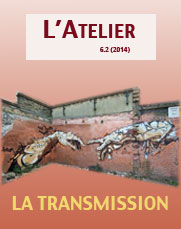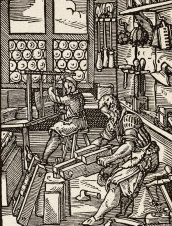'Mired in history': réviser et transmettre l'histoire dans A Star Called Henry, A Long Long Way et leur traduction française
Mots-clés :
Doyle, Roddy, Barry, Sebastian, Roman historique, Révisionnisme, TraductionRésumé
Toute traduction est transmission, passage d’un texte à travers des barrières linguistiques et culturelles afin de le rendre disponible à un public étranger. Mais que transmet-on? Le(s) sens, le style, la culture ? Tout n’est pas toujours traduisible, le passage dans une langue-culture différente entraîne toujours certaines pertes. La question de la transmission se pose doublement pour la traduction de romans historiques, dans lesquels l’auteur revient sur des événements majeurs de l’histoire dont il propose une (ré)analyse, participant ainsi à leur transmission dans la mémoire collective. Si le roman historique est traduit, il permet également de faire découvrir l’histoire d’un pays à un public plus large. C’est le cas de deux romans historiques irlandais : A Star Called Henry de Roddy Doyle et A Long Long Way de Sebastian Barry. Dans cet article, nous analysons d’abord la représentation de l’insurrection de Pâques 1916 et de la Grande Guerre par les auteurs. La question de la transmission est ici d’autant plus intéressante que ceux-ci adoptent une perspective révisionniste en remettant en cause l’histoire officielle. Ils s’élèvent contre une vision de l’Irlande comme nation homogène, gaélique, catholique et rurale, vision qui exclut de nombreux groupes du récit national, notamment la population urbaine des taudis dublinois représentée par Doyle et les Irlandais engagés du côté de l’Empire britannique auxquels Barry donne une voix. Nous verrons comment les romans réécrivent l’histoire de la période avant de nous tourner vers leur traduction en français pour examiner la manière dont opère cette seconde transmission, les déformations éventuelles que subissent les représentations de l’histoire à la traduction et les stratégies mises en œuvre par les traducteurs pour initier le public francophone à l’histoire irlandaise.
Every translation is a transmission, the transfer of a text through linguistic and cultural borders in order to make it available to a foreign readership. But what is transmitted: the meaning(s), the author’s style, cultural references? Everything cannot always be translated, and the transfer into a different language and culture almost always generates a certain degree of entropy. The question of transmission is especially interesting as regards the translation of historical novels, where the author represents and (re)analyses major events, thus taking part in their transmission and inclusion in collective memory. Translated historical novels can introduce a wider readership to a country’s history. In this article we will consider two Irish historical novels, A Star Called Henry (Roddy Doyle) and A Long Long Way (Sebastian Barry), in which the Easter Rising and World War I are represented. The issue of transmission is all the more interesting since both authors assume a revisionist stance by challenging the official version of Irish history. They bring into question the vision of Ireland as a homogeneous rural nation both Catholic and Gaelic. Such a vision excludes various groups from the national (hi)story, among which the working class represented by Doyle and Irish soldiers fighting in the British army, to whom Barry gives a voice. We will see how history is rewritten in these novels before turning to their translation into French in order to examine how that second transmission operates. We will try and outline what distortions are undergone by historical representations in translation and what strategies are implemented by the translators so as to best introduce French readers to Irish history.
Publiée
Numéro
Rubrique
Licence
-
L’envoi spontané d’un article à la rédaction de L’Atelier implique l’autorisation de publication et la cession des droits dans les limites établies par la loi de propriété intellectuelle.
-
L’Atelier conserve les droits de reproduction des articles publiés, quelque soit le support : internet, CD ROM, réimpression, photocopie, etc.
-
L’auteur conserve le droit de publier ultérieurement son article déjà paru dans L’Atelier avec la seule obligation de mentionner le nom de la revue comme source de la première publication.


